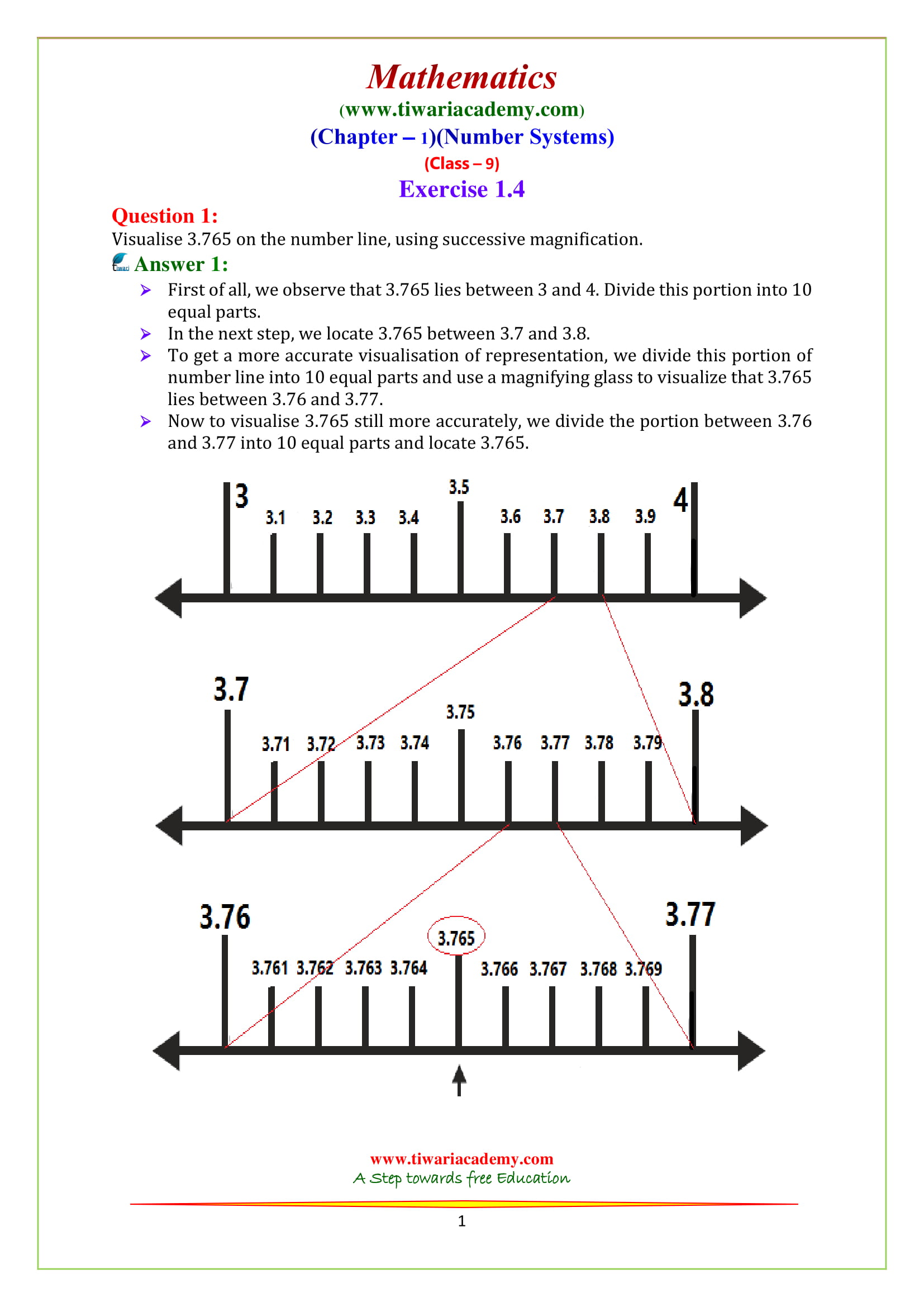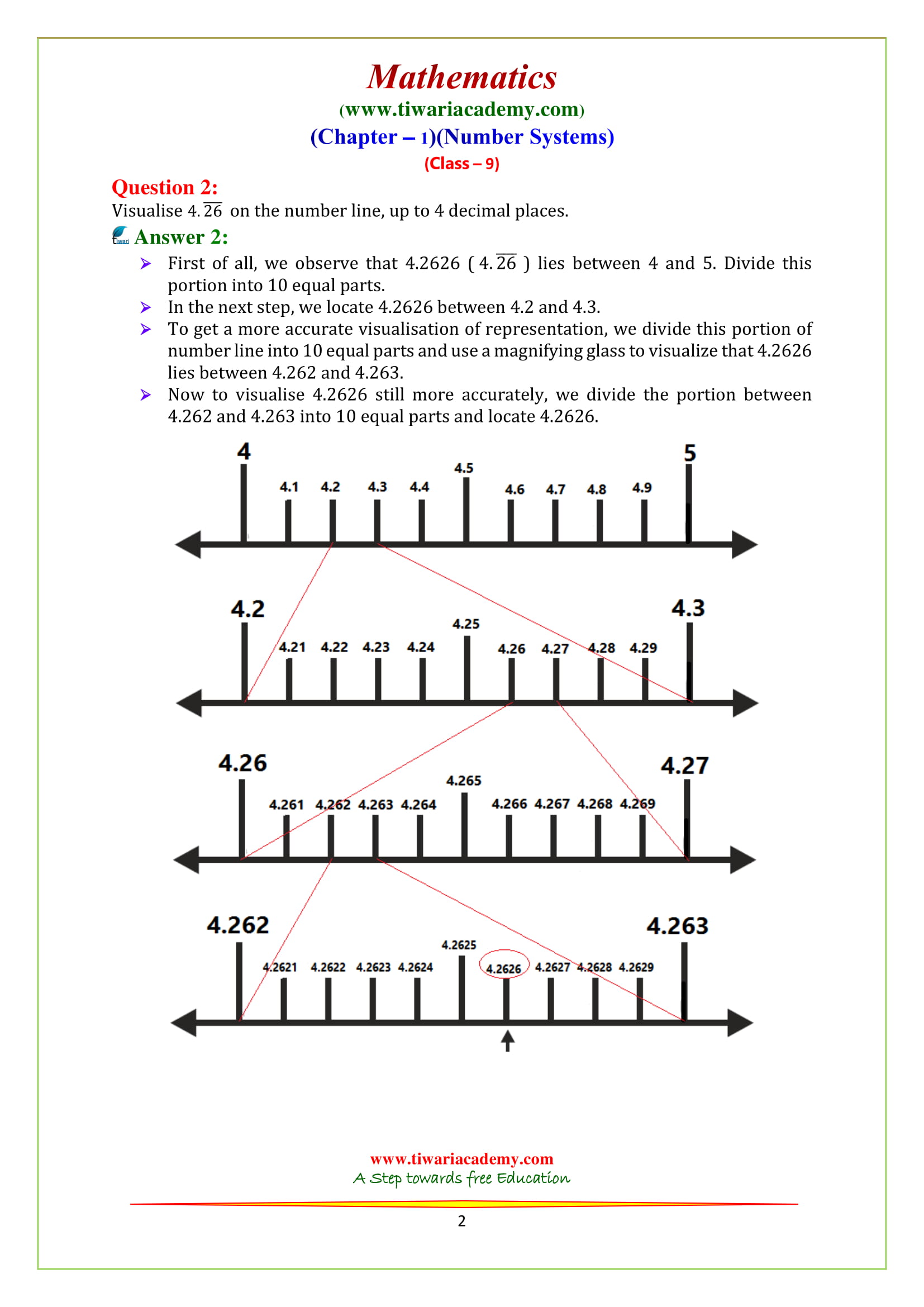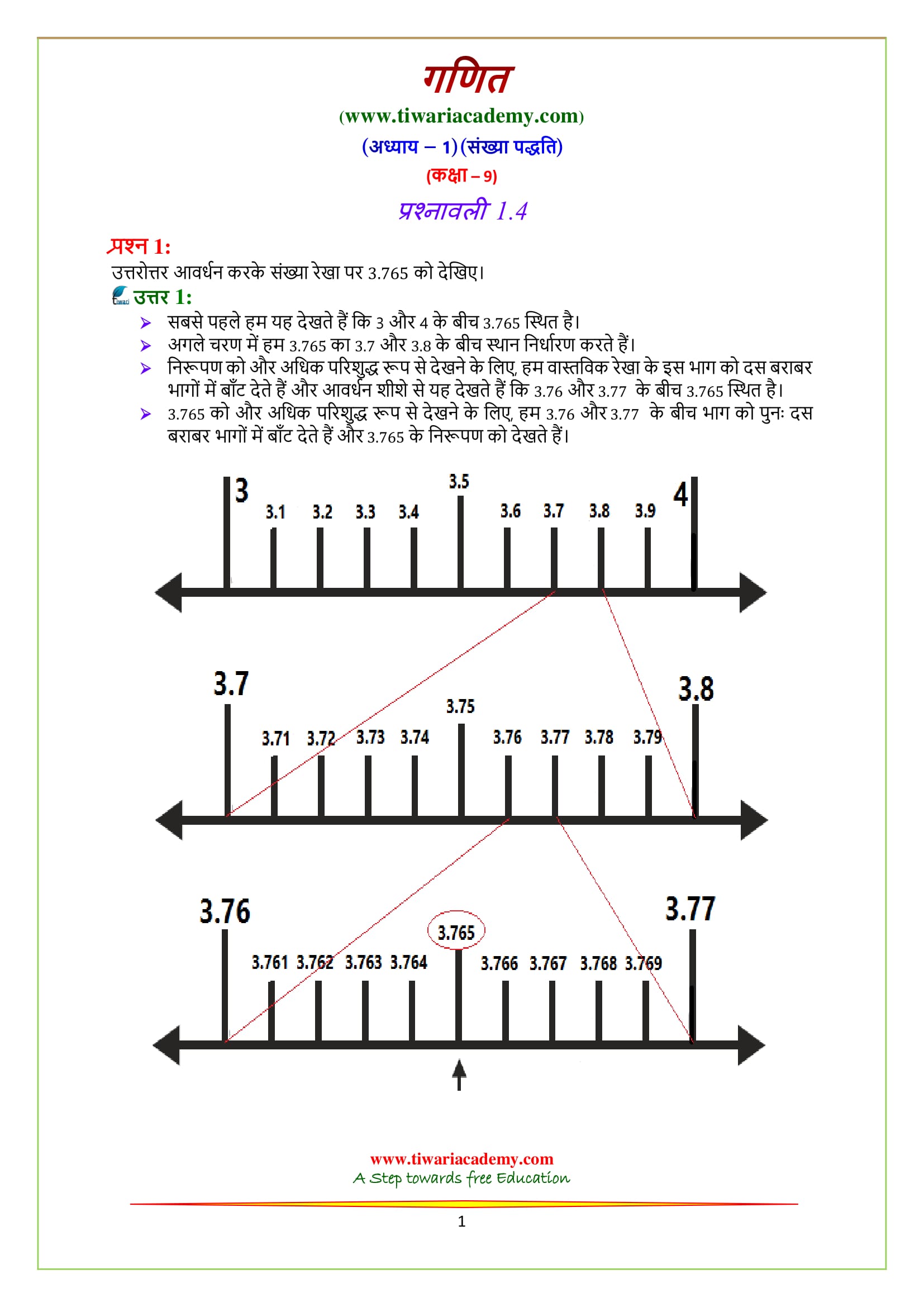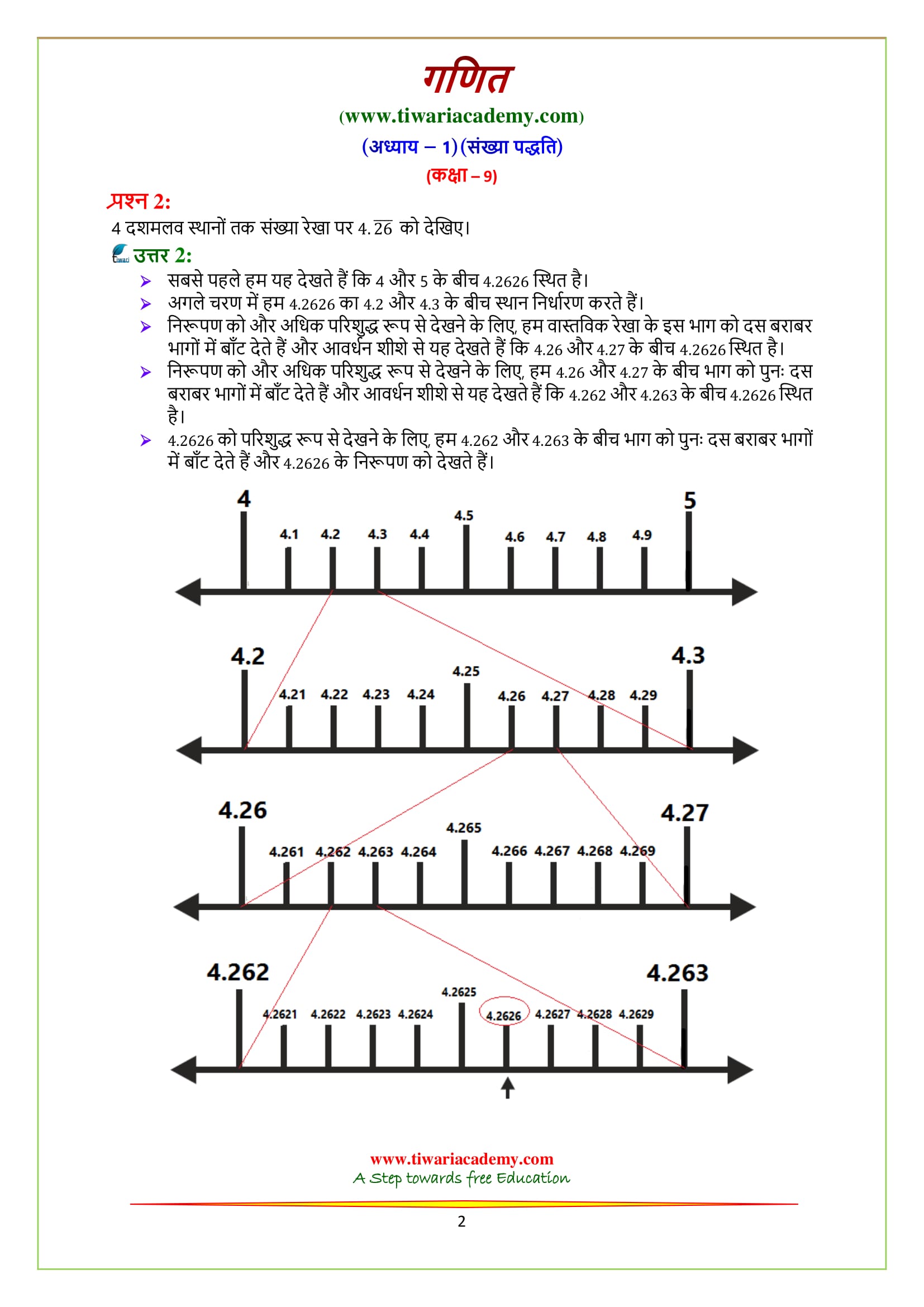NCERT Solutions for Class 9 Maths Chapter 1 Exercise 1.4 Number Systems in Hindi and English Medium for academic session 2025-26. Discover the 2025-26 academic session’s NCERT Solutions for Class 9 Maths Chapter 1 Exercise 1.4 on Number Systems. Expertly curated resources available in both Hindi and English Medium to enhance your understanding of the topic.
NCERT Solutions for Class 9 Maths Chapter 1 Exercise 1.4
CBSE NCERT Solutions for class 9 of all chapter are available in both medium (in Hindi Medium and English Medium or View in Video Format sols). Download (Exercise 1.4) in free PDF updated for all boards use it online without downloading. These solutions are based on Latest CBSE Syllabus 2025-26 for CBSE, MP Board, Gujrat Board and UP Board.
| Class: 9 | Mathematics |
| Chatper: 1 | Number Systems |
| Exercise: 1.4 | Textbook Solutions |
| Mode: | Online Study Material and Videos |
| Medium: | English and Hindi Medium |
9th Maths Chapter 1 Exercise 1.4 Solution
9 Maths Exercise 1.4 solutions is given below to use online. Go back to Class 9 Maths Chapter 1 main page Solutions to see other exercises. English medium as well as Hindi Medium solutions are given below to use online or download in PDF for new session 2025-26.
9th Maths Exercise 1.4 Solutions in Hindi & English
We have prepared Hindi Medium solutions for CBSE Board as well as UP Board (High School) to provide more help to the students. Uttar Pradesh Board has also implemented NCERT Books 2025-26 for their students from academic session 2018 onward. Students of UP Board also have to follow the CBSE Books 2025-26 onward.
Important Notes on 9th Maths Exercise 1.4
Yaad Rakhen:
- Sabhee parimey sankhyaon aur aparimey sankhyaon ko milakar vaastavik sankhyaon ka sangrah kaha jaata hai.
- Ek sankhya jise ke roop mein na likha ja sake (jahaan p aur q poornaank hain tatha q ≠ 0) aparimey sankhya kahalaatee hai.
- Ek parimey sankhya ka dashamalav prasaar saant ya asaant aavartee hota hai tatha ek aparimey sankhya ka dashamalav prasaar asaant anaavartee hota hai.
NCERT Exemplar Problems Book issued by CBSE contains questions which provide good practice for the School tests as well as CBSE Final Exams. After completing your NCERT Books, every students must do Exemplar Problems book to improve their knowledge about the chapter. Solutions of these Exemplar Problems Book are also available to download in PDF. First of all you try yourself, then see the answers or solutions for confirmation. Assignments and Chapter wise test papers will be uploaded during the entire session with latest updates. For any further suggestion, Contact Us without any hesitation.
Important Questions on 9th Maths Exercise 1.4
- Represent -7/5 on the number line.
- Represent 3 + √2.6 on the number line.
- Represent √24 up to three decimal places by successive magnification.
- State whether the following statement is true or false:
There are Real Numbers which cannot be written in the form of p/q, q ≠ 0, where p and q are integers. - Sankhya rekha par √2.3 ko jyamiti rup se nirupit kijie.
Download NCERT Books and Offline apps based on new CBSE Syllabus. Ask your doubts and share your knowledge with your friends and other users through Discussion Forum.
What will students learn in exercise 1.4 of class 9 Maths?
In exercise 1.4 (chapter 1) of class 9 Maths, students will learn how to represent real numbers on the number line. Students enjoy doing this exercise.
Is Class 9 exercise 1.4 important for the terminal exams?
No, exercise 1.4 of class 9 Maths is not that important
for the exams, but in exams, questions can come from this exercise. Students should do this exercise for knowledge.
Is exercise 1.4 of class 9th Maths easy to understand or solve?
Yes, exercise 1.4 of class 9th Maths is very easy to understand and solve. There are two questions and 1 example (example 11) in exercise 1.4 of class 9th Maths. Both questions 1, 2 and example 11 are of the same kind.
How much time, students need to do exercise 1.4 of class 9th Maths?
Exercise 1.4 of class 9 Maths is a very small exercise with two questions and 1 example. Students need a maximum of one day to complete this exercise. This time also depends on student’s speed, efficiency, capability, and many other factors.





